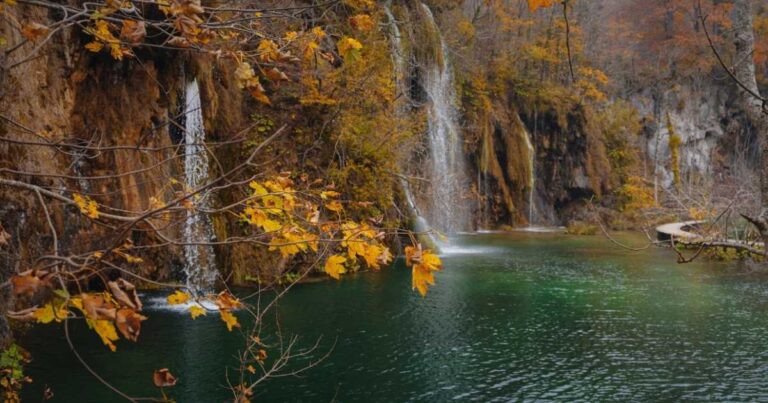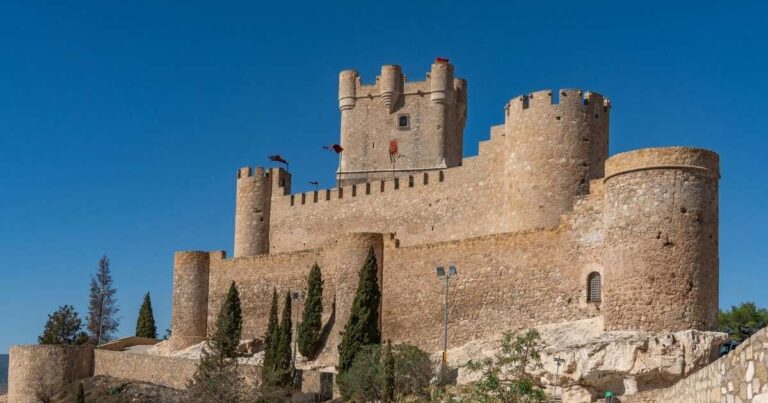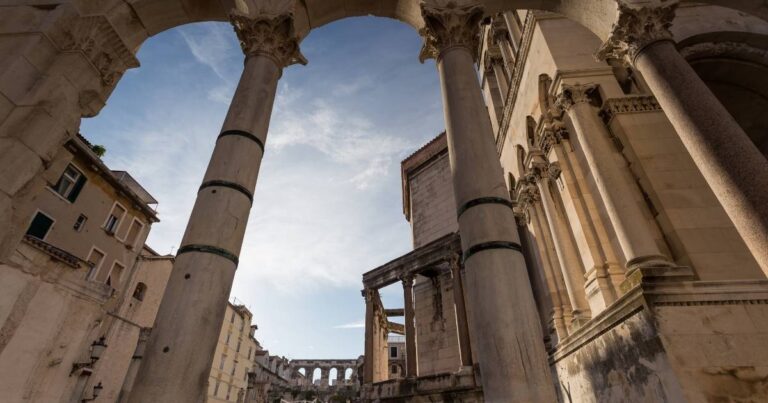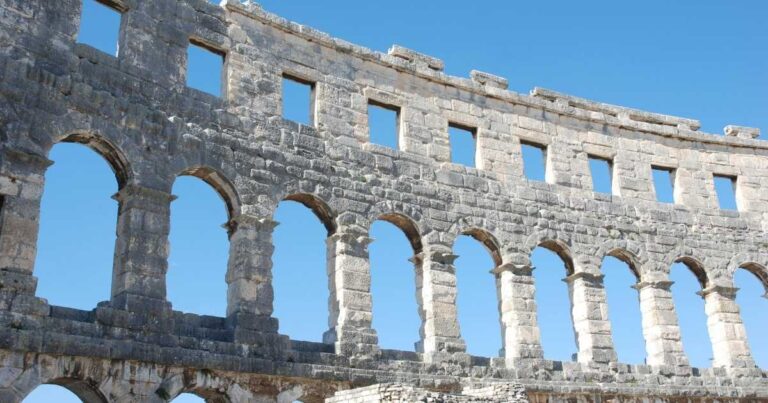The influence of the Habsburgs on Croatia is a rich and multifaceted story that spans centuries. This article delves into the profound impact of the Habsburg dynasty on Croatian history, culture, and society. From their initial involvement to the establishment of the Military Frontier, and the eventual formation of the Austro-Hungarian Empire, the Habsburgs left an indelible mark on the region. We will explore the key events, figures, and developments that shaped Croatia under Habsburg rule, and how this legacy continues to resonate in present-day Croatia.
The Habsburg Monarchy and Its Influence in Croatia
Overview of the Habsburg Dynasty
The Habsburg dynasty, a prominent noble family, rose to power in Europe, significantly shaping the continent’s political landscape. Originating in Switzerland, the house of Habsburg expanded its influence through strategic marriages and territorial acquisitions. The Habsburgs held the title of Holy Roman Emperor for centuries, solidifying their position as one of the most powerful families in Europe. Their reach extended across vast territories, including Austria, Hungary, and parts of present-day Croatia, impacting the development of these regions.
The Role of the Habsburgs in Croatian History
The Habsburgs’ role in Croatian history began in the 16th century when Ferdinand I was elected King of Croatia. Faced with the constant threat of the Ottoman Empire, the Croats sought protection under the Austrian Habsburgs. This alliance led to centuries of Habsburg rule, shaping the political and social landscape of Croatia. The Habsburg monarchy aimed to integrate Croatia into its empire, influencing its legal system, administrative structures, and military strategies. The kingdom of Croatia-Slavonia became integral to the Habsburg empire.
Impact on Croatian Society and Culture
The impact of the Habsburgs on Croatian society and culture is undeniable, influencing various facets of life from architecture to education. The Habsburgs implemented reforms, modernized infrastructure, and introduced new ideas that stimulated cultural and intellectual growth. Croatian cities, like Zagreb and Osijek, flourished under Habsburg rule, showcasing a blend of Austrian and Croatian architectural styles. The Croatian national identity was shaped by the interactions between Croatian traditions and the broader European culture fostered by the Habsburgs. These impacts are evident throughout present-day Croatia.
The Military Frontier: A Habsburg Legacy
Establishment of the Military Frontier
The establishment of the Military Frontier represents a significant Habsburg legacy in Croatia. Faced with the persistent threat of the Ottomans, the Habsburg monarchy created this buffer zone to protect its territories. The Military Frontier stretched across Croatia, Serbia, and Hungary, becoming a crucial line of defense against Ottoman incursions. The Habsburgs incentivized settlement in this region by granting land and privileges to those willing to serve as soldiers, thus creating a unique social and military structure.
Life on the Military Frontier in Croatia
Life on the Military Frontier in Croatia was characterized by constant vigilance and military preparedness. The inhabitants, primarily Croats and Serbs, lived in fortified villages and were obligated to military service. In exchange, they enjoyed certain freedoms and exemptions from feudal obligations. This lifestyle shaped a distinct culture, blending military discipline with traditional customs. The Military Frontier became a crucible for the development of unique social and ethnic identities within the broader context of the Habsburg empire.
Significance of the Frontier in Habsburg Strategy
The Military Frontier held immense strategic importance for the Habsburgs. It served as a defensive barrier, slowing down Ottoman advances and providing early warning of impending attacks. Moreover, the Military Frontier provided a steady supply of soldiers, who were crucial in Habsburg military campaigns. This region enabled the Austrian Habsburgs to maintain a strong military presence in the Balkans and project power in the face of Ottoman expansion. The significance of the frontier is still felt today.
Habsburg Rulers and Their Contributions
Key Habsburg Monarchs in Croatian History
Several key figures played pivotal roles in shaping Croatian history. Ferdinand I, elected King of Croatia in 1527, initiated Habsburg rule, seeking to provide protection against the Ottoman Empire. Josip Jelačić, though not a Habsburg, his loyalty and actions during the Revolution of 1848 solidified the Habsburg dynasty’s position in Croatia and cemented Croatian identity. Other Habsburgs also impacted Croatia, as shown in the table below:
| Habsburg Ruler | Impact on Croatia |
|---|---|
| Maria Theresa | Implemented significant reforms, including modernizing education and administration. |
| Joseph II | Continued reforms, though his centralizing tendencies faced resistance. |
These figures demonstrate the deep connection between Croatia and the Austrian Empire.
Policies of the Habsburg Rulers Towards Croatia
The policies of the Habsburg rulers toward Croatia were often driven by strategic and economic considerations. The Habsburg monarchy sought to integrate Croatia into the broader Austrian empire, implementing centralized administrative structures. The Military Frontier, established to defend against the Ottomans, was a key example of Habsburg policy. Economic policies aimed to integrate Croatia into the Austrian economic system, sometimes favoring Austrian interests. However, reforms also brought advancements in education and infrastructure, fostering cultural development. The Habsburgs often had to balance central control with respecting Croatian traditions and autonomy, a delicate act.
Cultural and Economic Developments Under Habsburg Rule
Under Habsburg rule, Croatia experienced significant cultural and economic developments. Cities like Zagreb and Osijek flourished, showcasing a blend of Austrian and Croatian architectural styles. The Habsburg monarchy invested in infrastructure, improving roads and transportation networks, which facilitated trade. Education reforms led to the establishment of schools and universities, fostering intellectual growth. Economically, Croatia benefited from integration into the larger Austrian empire, gaining access to wider markets. However, tensions arose due to the Austrian empire’s centralizing policies that sometimes overlooked specific Croatian needs. These developments shaped present-day Croatia.
Austria-Hungary and the Croatian National Revival
The Formation of Austria-Hungary
The formation of Austria-Hungary in 1867 marked a significant turning point in Croatian history. Following the Austro-Hungarian compromise, the Habsburg empire was reorganized into a dual monarchy. This meant that the Austrian empire and the Kingdom of Hungary were united under a single ruler, the Habsburg emperor. Croatia, formally the Kingdom of Croatia-Slavonia, remained within the Hungarian part of the Austro-Hungarian empire. This arrangement had profound implications for Croatian national identity and aspirations for greater autonomy within Austria-Hungary. Vienna and Budapest became dual centres of power within the Austro-Hungarian empire.
Effects on Croatian National Identity
The formation of Austria-Hungary profoundly affected Croatian national identity, sparking a Croatian national revival. Being part of the Hungarian kingdom within Austria-Hungary led to increased Hungarian influence, prompting a stronger assertion of Croatian cultural and linguistic identity. Croats sought to preserve their traditions, language, and cultural heritage in the face of Hungarian efforts at Magyarization. This period saw the rise of Croatian intellectuals, writers, and artists who promoted Croatian national consciousness. The idea of a united Triune Kingdom of Croatia-Slavonia and Dalmatia became central to this revival, especially in Zagreb.
Movement Towards Croatian Autonomy
The Croatian national revival fueled a growing movement towards Croatian autonomy within Austria-Hungary. Croats increasingly demanded greater self-governance and representation in the Austro-Hungarian political system. Political parties emerged, advocating for Croatian rights and autonomy, often clashing with Hungarian authorities. Figures like Josip Jelačić, who had previously defended the Habsburg empire, became symbols of Croatian resistance to Hungarian domination. This movement aimed to achieve greater control over Croatian affairs, including education, language, and local governance, setting the stage for future developments towards independence for Croatia within Austria-Hungary and beyond.
Modern Implications of Habsburg Heritage in Croatia
Preservation of Habsburg Architecture and Landmarks
The preservation of Habsburg architecture and landmarks is a significant aspect of maintaining cultural heritage in present-day Croatia. Cities like Zagreb and Osijek showcase stunning examples of Austrian architecture, reflecting the Habsburg monarchy’s influence. These buildings serve as tangible reminders of the Habsburg era, attracting tourists and fostering a sense of historical identity. Efforts to conserve these architectural treasures ensure that future generations can appreciate the Habsburg legacy, highlighting the importance of preserving Croatian architectural history in line with the Habsburgs’ impact.
Tourism and Cultural Events Celebrating Habsburg Heritage
Tourism and cultural events play a crucial role in celebrating Habsburg heritage in Croatia. Many tourists visit Croatia to explore the historical sites and landmarks associated with the Habsburg rule. Cultural festivals, exhibitions, and historical reenactments bring the Habsburg era to life, educating visitors and locals alike about this important period. These events often highlight the contributions of key members of the Habsburg family and showcase the blend of Austrian and Croatian cultures that shaped the region, especially in Zagreb and Osijek. This vibrant cultural tourism supports local economies and fosters a deeper appreciation for Croatia’s complex history.
Current Trends in Habsburg Research and Scholarship
Current trends in Habsburg research and scholarship continue to shed light on the multifaceted impact of the Habsburgs on Croatia. Scholars are exploring various aspects of Habsburg rule, including its political, economic, and cultural dimensions. Research focuses on the Habsburg monarchy’s influence on Croatian national identity, the role of the Military Frontier, and the dynamics within the Austro-Hungarian empire. These studies often utilize archival materials and interdisciplinary approaches to provide a more nuanced understanding of the Habsburg legacy. Moreover, there is growing interest in comparing the Habsburg experience in Croatia with other regions under Habsburg rule such as Hungary and Istria.
Conclusion and Future Insights
Recap of Habsburg Influence on Croatia
In recap, the Habsburg influence on Croatia is profound and enduring, having shaped the nation’s political, social, and cultural landscape for centuries. From the initial seeking of protection from Ferdinand and the Ottoman empire to the establishment of the Military Frontier and the subsequent integration into the Austro-Hungarian empire, the Habsburgs left an indelible mark. The Austrian Habsburg impact is evident in the architecture of Zagreb and Osijek, the legal and administrative reforms, and the development of Croatian national identity. The legacy of Maria Theresa and Joseph II continues to resonate in present-day Croatia, as the kingdom of Croatia-Slavonia maintains its historical significance.
Looking Ahead: The Future of Habsburg Heritage
Looking ahead, the future of Habsburg heritage in Croatia holds considerable promise for continued exploration and understanding. As research and scholarship evolve, new perspectives on the Habsburgs’ impact will emerge, shedding light on previously unexplored aspects of this historical relationship. Efforts to preserve Habsburg-era architecture and landmarks, promote cultural tourism, and engage with the broader European context will further enrich Croatia’s cultural landscape. By fostering a deeper appreciation for this complex history, present-day Croatia can leverage its Habsburg legacy to promote cultural exchange and understanding within the Austro-Hungarian empire.
Final Thoughts on the Habsburg Legacy in Croatia
In conclusion, the Habsburg legacy in Croatia is a testament to the intricate interplay of power, culture, and identity that shaped the region. From Ferdinand’s initial involvement to the era of Austria-Hungary, the Habsburg dynasty left an enduring mark on Croatian society. The Austrian Habsburg influence is visible in the architecture, institutions, and cultural traditions that continue to define Croatia today, especially Zagreb. Acknowledging and understanding this legacy is essential for present-day Croatia as it navigates its place in the European context, balancing the influence of the Habsburg empire with Croatian national aspirations and identity.
FAQs About the Habsburgs in Croatia
What was the role of the Habsburgs in Croatian history?
The Habsburgs played a pivotal role in Croatian history, beginning with Ferdinand I’s election as King of Croatia in 1527. Faced with constant Ottoman threats, the Croats sought protection from the Austrian Habsburgs. This alliance ushered in centuries of Habsburg rule, profoundly shaping Croatia’s political and social landscape. The Habsburg monarchy integrated Croatia into its Austrian empire, influencing legal systems and military strategies, impacting Dalmatia, and leaving an enduring legacy on present-day Croatia.
How did the Habsburg Monarchy affect Croatian culture?
The Habsburg monarchy profoundly affected Croatian culture by influencing various aspects of life, from architecture to education. Under Habsburg rule, cities like Zagreb and Osijek flourished, blending Austrian and Croatian architectural styles. Reforms implemented by Maria Theresa and Joseph II modernized infrastructure and introduced new ideas, stimulating cultural and intellectual growth. The Croatian national identity evolved through the interaction of Croatian traditions and broader European culture fostered by the Habsburgs.
What is the Military Frontier in the context of the Habsburgs?
In the context of the Habsburgs, the Military Frontier was a buffer zone established by the Habsburg monarchy to protect its territories from the Ottoman empire. Stretching across Croatia, Serbia, and Hungary, it served as a crucial line of defence. The Austrian Habsburgs incentivized settlement in this region by granting land and privileges to those willing to serve as soldiers. Life on the Military Frontier shaped a unique social and military culture that blended military discipline with local customs.
Who were the most significant Habsburg rulers in Croatia?
Ferdinand I, elected King of Croatia in 1527, initiated Habsburg rule, providing protection against the Ottoman Empire. Josip Jelačić, though not a Habsburg, played a key role in solidifying the Habsburgs’ position during the Revolution of 1848. Other members of the Habsburg family also influenced Croatian development, as detailed below:
| Habsburg Ruler | Notable Contribution |
|---|---|
| Maria Theresa | Modernized education and administration. |
| Joseph II | Continued reforms, although with some resistance. |
These individuals shaped the destiny of Croatia as part of the Austro-Hungarian Empire.
How is Habsburg heritage preserved in modern Croatia?
In present-day Croatia, Habsburg heritage is preserved through the conservation of Habsburg architecture and landmarks in cities like Zagreb and Osijek. These Austrian buildings, constructed during the Austro-Hungarian empire, serve as reminders of the Habsburg era. Tourism and cultural events celebrate Habsburg rule, educating visitors about this important period in Croatian history. Current research and scholarship continue to explore the multifaceted impact of the Austrian Habsburgs on Croatia, highlighting the importance of the Habsburg dynasty.







